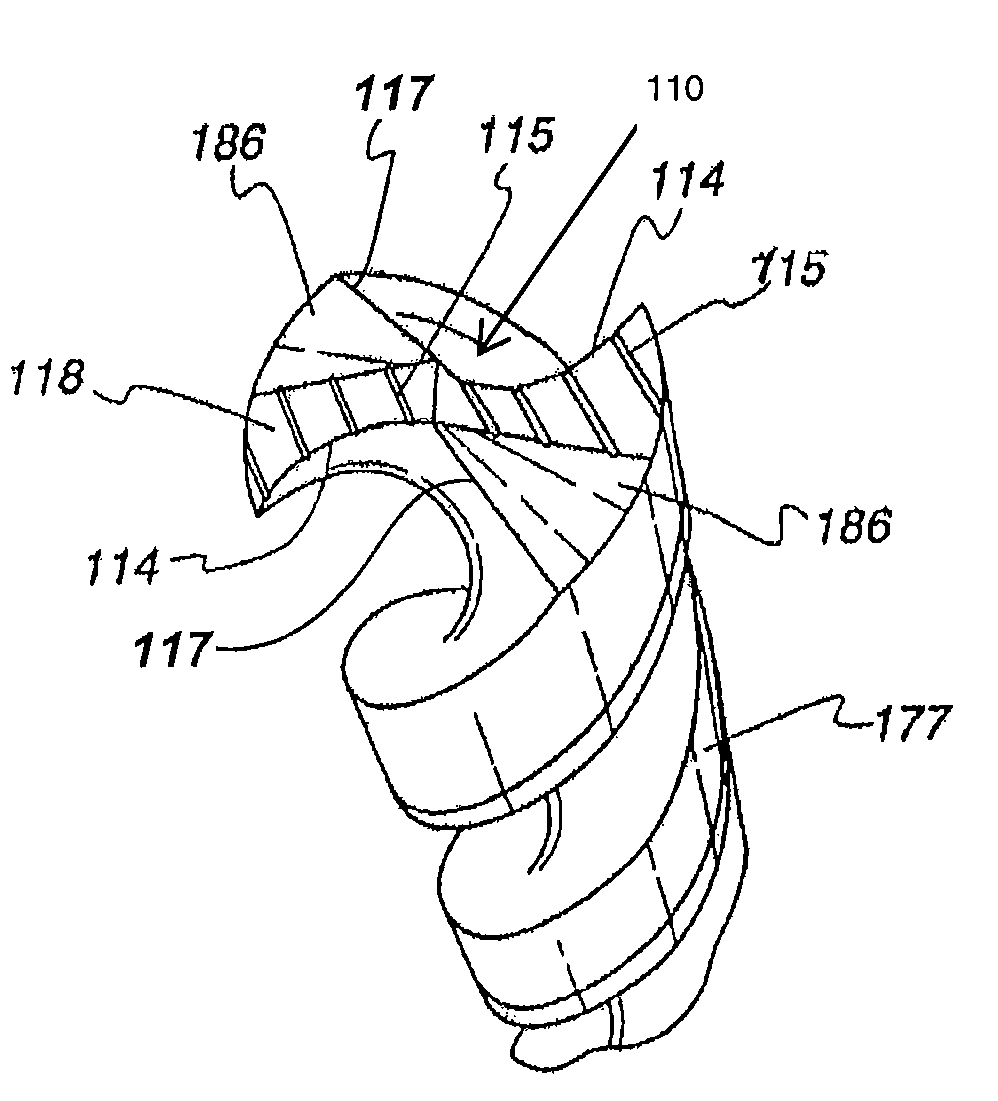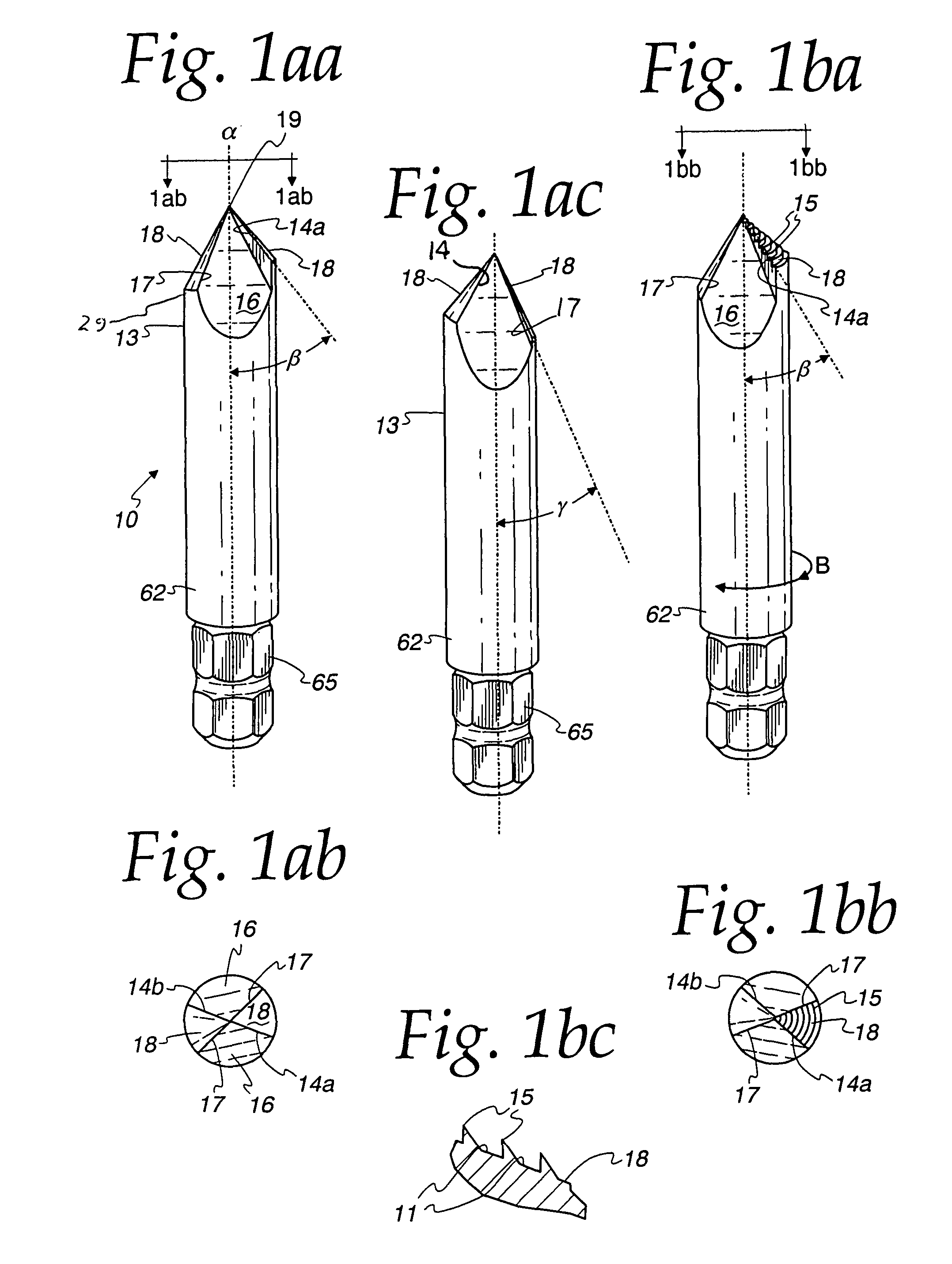Damaged bolt and screw removing devices
a technology of bolt and screw, which is applied in the direction of manufacturing tools, wrenches, wood boring tools, etc., can solve the problems of reducing the rotational torque required of the device, reducing the rotational torque required,
- Summary
- Abstract
- Description
- Claims
- Application Information
AI Technical Summary
Benefits of technology
Problems solved by technology
Method used
Image
Examples
Embodiment Construction
[0055]The present invention provides a bit configuration and various bit / threaded configurations on a single device to allow for easier fastener extraction. More specifically, the present invention provides a bit for removing a broken fastener having a direction of engagement, said bit comprising: (a) an elongated shaft with a longitudinal axis, said shaft having a first end, and a second end, said first end terminating in a tip region; (b) a plurality of non-cutting edges and of nonlinear cutting edges extending from said tip region, said cutting edges configured to cut into the fastener when the bit is rotated in a direction opposite to the fastener's direction of engagement, and said cutting edges and said non-cutting edges alternating with each-other; (c) a plurality of frusto-conical traction surfaces each extending from one said cutting edge to a non-cutting edge, wherein one or more of said surfaces comprise a plurality of serrations; and (d) said second end of the shaft conf...
PUM
| Property | Measurement | Unit |
|---|---|---|
| angle | aaaaa | aaaaa |
| angle | aaaaa | aaaaa |
| rotational torque | aaaaa | aaaaa |
Abstract
Description
Claims
Application Information
 Login to View More
Login to View More - R&D
- Intellectual Property
- Life Sciences
- Materials
- Tech Scout
- Unparalleled Data Quality
- Higher Quality Content
- 60% Fewer Hallucinations
Browse by: Latest US Patents, China's latest patents, Technical Efficacy Thesaurus, Application Domain, Technology Topic, Popular Technical Reports.
© 2025 PatSnap. All rights reserved.Legal|Privacy policy|Modern Slavery Act Transparency Statement|Sitemap|About US| Contact US: help@patsnap.com



